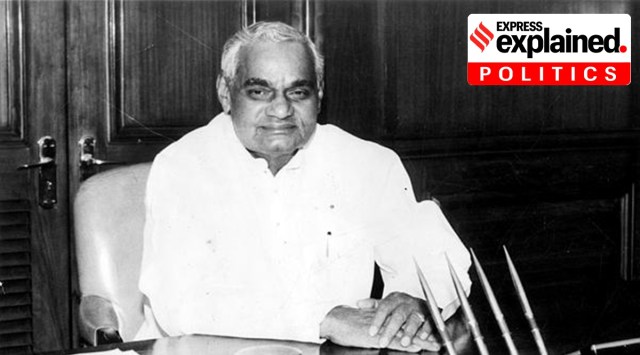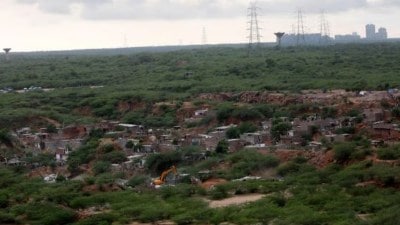On Vajpayee’s birth anniversary, remembering his efforts to improve India-China ties
Vajpayee first visited China in 1979 as India’s foreign minister under Morarji Desai’s government. Although the two countries didn’t sign any consequential treaty, the visit helped unfreeze the border issue after the 1962 war.
 Vajpayee's visit to Beijing in 2003 during his prime ministership brought India and China closer. (Express archive)
Vajpayee's visit to Beijing in 2003 during his prime ministership brought India and China closer. (Express archive) At a time when India shares a deeply fraught relationship with China — Indian and People’s Liberation Army (PLA) troops clashed at Tawang in Arunachal Pradesh earlier in December — it’s worthwhile to note how former Prime Minister Atal Bihari Vajpayee, whose 98th birth anniversary it is today, played an important role in the normalisation of Sino-Indian ties.
Vajpayee first visited China in 1979 as India’s foreign minister under Morarji Desai’s government. Although the two countries didn’t sign any consequential treaty, the visit, in Vajpayee’s words, unfroze the border issue, which had come to a stand-still after the 1962 Sino-Indian war. Vajpayee held high-level talks with Chinese leadership, including Premier Hua Guofeng, Vice Premier Deng Xiaoping and Foreign Minister Huang Hua and the nations agreed to maintain tranquillity along the border.
However, it was his visit to Beijing in 2003 during his prime ministership that brought India and China closer. Apart from signing pacts which improved social, political and economic relations, Vajpayee’s efforts ushered in a new era of cooperation between the two countries.
Breakthrough in bilateral relations
The former prime minister’s 2003 tour to China took place against the backdrop of a soured relationship after India conducted nuclear tests in 1998 under his leadership. But Vajpayee, known for being an astute statesman, didn’t let his tour go in vain and convinced Beijing to resume working towards settling the boundary dispute.
According to a joint statement released after the completion of the tour, “The two sides agreed that pending an ultimate solution, they should work together to maintain peace and tranquility in the border areas, and reiterated their commitment to continue implementation of the agreements signed for this purpose, including the clarification of the Line of Actual Control.”
This led to the appointment of Special Representatives (SRs) on both sides for negotiating border disputes. Under the SR mechanism, 22 rounds of talks have been held, the last of which was hosted by New Delhi in December 2020.
Moreover, during the visit, India for the first time recognised that “the Tibet Autonomous Region is part of the territory of the People’s Republic of China”. In return, China recognised Sikkim as part of India by agreeing to “designate Changgu of Sikkim state as the venue for the border trade market”.
Apart from looking to resolve territorial disagreements, the two countries signed several memoranda to boost friendly relations. These included agreements on making visa processes simpler, exchange of legal information, export of Indian mangoes to China, establishing cultural centres in Delhi and Beijing, and mutual recognition of academic degrees.
Present Sino-India relations
In recent years, the tension between India and China has worsened and the nations haven’t made any significant progress in their bilateral ties since 2003. On December 9 this year, troops of both countries clashed near the Tawang sector of Arunachal Pradesh at the eastern tip of India. According to reports, soldiers suffered minor injuries.
Earlier in June 2020, the PLA and the Indian Army got involved in a brawl in the Galwan River valley, in Ladakh, which reportedly led to the deaths of 20 Indian soldiers and several Chinese troops. The incident took place three years after a military stand-off between the two countries in Doklam.



- 01
- 02
- 03
- 04
- 05



































